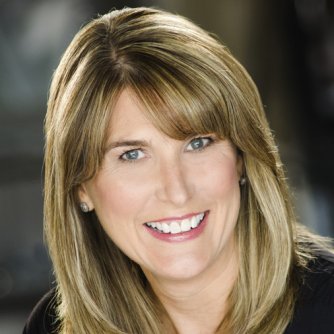If you’ve been to the doctor lately, you’ve probably seen them using a computer. The number of Colorado physicians using electronic medical records has roughly doubled the last six months. A lot of that has to do with the federal government offering them incentive payments to go digital. Doctors can get up to $63,000 for making the switch from paper records.
But CPR Health Reporter Eric Whitney says the transition is proving to be a bumpy ride.
This is a transcript of Eric’s story.
Reporter: For about half a million Coloradans, electronic medical records, or EMRs are nothing new.
Palen: In Kaiser, here we went fully EMR in ’98 .
Reporter: Dr. Ted Palen is an internist at Kaiser Permanente in Denver. Big organizations like it have tended to adopt EMRs more quickly than small practices, in part because they can spread the considerable cost across more users.
Palen says he has more time to practice medicine now that he’s free from paper charts.
Palen: The paper chart wasn’t there, they didn’t know where it was, you’d have to call for it, you get it 3 days later. You have to tell the patient, I’ll have to get back to you on that. I don’t know how many conversations I had with patients, I’ll have to get back to you on that.
Reporter: That’s still the story for a lot of doctors. Until last year, when new federal incentive payments started, most U-S physicians still hadn’t gone digital. Since then, hundreds of Colorado doctors have started using EMRs.
Dr. Glen Kelly, a rehabilitation specialist, is getting ready to buy a system for his new practice. He wants to make sure he’ll get his money’s worth.
Kelly: I can tell that I’m going to have to do quite a bit of research to find one that isn’t overly expensive, that’s prohibitive, but can also do the specific things that I want it to do.
Reporter: Dr. Mary Wilkerson wishes she would have done more research. She and her four partners in a private family practice in Denver bought an electronic records system five years ago.
Wilkerson: We were told by sales people that we would make more money because we’d be more efficient, and you’d be able to see more patients, We’d be able to bill faster, get the money in the bank at the push of a button. And none of that panned out.
Reporter: Wilkerson says they were told the practice would be able to see 25% more patients, meaning: more income.
But she and her partners found they actually had to cut back on the number of people they could see.
Wilkerson: For the first couple months we were really probably only seeing 50%, and then tried to rampup to 75%. I’d say I never got above 80-85% of what I’d seen before, just because it’s time consuming.
Reporter: That meant Wilkerson and her partners were taking an unexpected financial hit, right after they’d borrowed $200,000 to buy the medical records software and the computers to run it.
They thought they’d be OK, though - that each doctor in the practice would get about $40,000 in federal incentive payments. They found out too late that they didn’t see enough Medicare patients to qualify for the full payment.
Wilkerson:And it was so disappointing to find out after all that, that because of the low number of Medicare patients we see, each of us was qualifying for only $2,000 in that first year.
Reporter: Pretty quickly, their dream of a more efficient, digital practice had turned into a nightmare.
Wilkerson: Within six months of our purchase, one of the partners just did not like it at all, did not like dealing with the computer, and actually left the practice, and we’d hoped she’d contribute to the loan that we’d taken out. But suddenly four of us were responsible for the $200,000 loan, we weren’t counting on that and that was hard.
Reporter: Eventually, Wilkerson and her partners decided they had to sell their practice, a direct result, she says, of their decision-making about electronic medical records.
While outcomes like that aren’t typical, surveys show that less than 20% of doctors describe their EMR transition as smooth. Close to 40% say they’re “unhappy” with the electronic records systems they use.
Cain: Right now we’re in a transitional time. Transitional times are tough.
Reporter: Dr. Jeffrey Cain is the president of the American Academy of Family Physicians. He also practices in Denver and has been using electronic medical records for a decade now. He says part of doctors’ frustration with electronic records is because much of the software is hard to learn to use – it took him two years to get comfortable with his system. But Cain says physicians who complain about EMRs slowing them down need to re-think their definition of “productivity.”
Cain: Traditionally we think of productivity as the number of patients I can see in a day. The electronic health record helps me better take care of people that aren’t in my office in a day. So I might be able to ask a question: What’s happening with all of my patients that have hypertension in my office?
Reporter: Here’s how that works:.EMRs let Cain scan all of his patients’ records quickly and I-D everyone with hypertension. Then he can scan that group to see who’s not controlling it well and why. Some are probably missing regular check-ups. Others may not actually fill the prescriptions he writes to treat their hypertension,or gain weight between visits. Good software can flag all those patients and help doctors get them back on track.
That kind of productivity, Cain says, would be nearly impossible to achieve with paper records.
CAIN: So it helps us manage their diseases over time in a way that improves outcome, but may not increase the number of people that walk in the door.
Reporter: The problem is, most doctors still get paid based on the number of patients who walk in the door, not how well they manage diseases over time. That’s supposed to change as Obamacare moves forward, but the switch to payment for quality care instead of quantity is taking a long time, and many doctors feel stuck in the middle.
The money the government is offering to help pay for electronic records is supposed to help. But there’s another incentive: Tech-savvy patients are starting to demand electronic records, too.
Blake: It does add definitely a layer of customer service to my experience that is really awesome.
Reporter: Denver resident Marina Blake has been with a digitally-enabled practice for the last three years, and doesn’t want to go back to paper records. She loves being able to call up her health record online whenever she wants. Sometimes she looks back at how her health indicators have changed over time, and if she has a question, she can email her doctor instead of taking time off work for an office visit and paying a co-pay.
Blake: For me it’s part of being an educated consumer. If I have more information, then I can ask better questions. I don’t have to wait and maybe something gets worse in the meantime while I’m waiting to ask a question.
Reporter: An estimated 66% of office-based doctors in Colorado are now using electronic medical records. But so far, only about 12% have qualified for the federal incentive payments. Getting the payments involves lots of documentation, because the government wants doctors to prove their actually using the technology in ways that should improve healthcare quality.
The payments are being offered for nine more years, but the longer doctors wait, the less money they qualify for.
[Photo: Kaiser Permanente]









